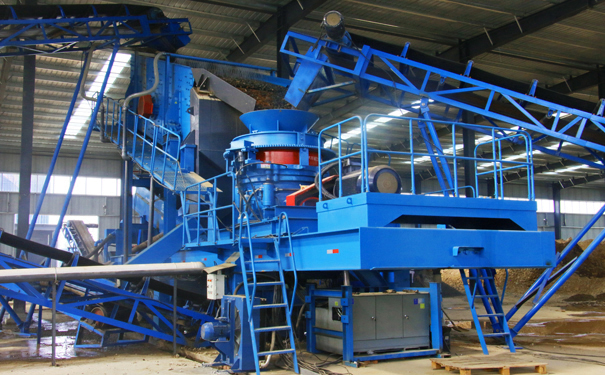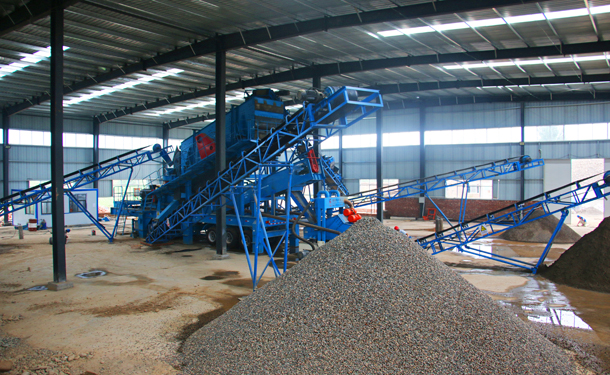The processing of sand and gravel needs to be crushed by a crusher. The sand and gravel production line uses different crushers and other auxiliary facilities to crush various ores. In the process of sand and gravel processing, there are many kinds of crushers to choose from, such as jaw crusher, impact crusher, cone crusher, etc. Faced with so many choices, how can users make reasonable choices of crushers into a problem? Due to different user requirements, the number of designed crushing process segments is also different. The selection of different segment crushers is closely related to the material. The choice of crusher depends on the hardness of the material and the expected particle size of the finished product.

According to the different particle size, the sand and stone processed by the crusher can be divided into extra coarse grain, coarse grain, medium grain, fine grain and sand grain according to the particle size. Among them, the particle size of extra-coarse particles is greater than or equal to 37.5mm, the maximum particle size of coarse-grained aggregate is 26.5mm or 31.5mm, the maximum particle size of medium-grained gravel material is 16mm or 19mm, and the fine aggregate type refers to the largest aggregate particle, the diameter is 9.5mm or 13.2mm. Under normal circumstances, the jaw crusher is used to coarsely break it, and the impact crusher and cone crusher can meet the medium-grain type and fine-grain type.
For the crushing of hard materials, if the sand and stone processed are hard materials like granite, cone crushers are generally used in the secondary crushing process, including single-cylinder and multi-cylinder hydraulic cone crushers. The demand and the amount of funds are used to select the crusher. If the particle size of the raw material is small and the particle size can directly meet the feeding requirements of the second-stage fine breaking, then the primary crushing stage can be directly omitted. In the hard sand production line, if the user does not follow the selection principle and chooses a crusher that crushes soft materials, its production cost will increase, and the crusher's use time is too short, the normal operating time is limited, and the associated bad The effect also lies in the need to spend more money on the purchase of wearing parts in the later period, which may stop production in the long run. Therefore, this is a problem that needs to be paid attention to when selecting the crusher on the hard sand and gravel production line of basalt and granite.

When processing materials with low hardness, if the sand and gravel production line crushes soft materials such as limestone that are not high in hardness, the impact crusher and hammer crusher can be selected in the secondary crushing. When choosing the impact crusher, the finished granule shape is better, round and full. If you choose the hammer crusher, the advantage is that the investment is saved, but the finished granule shape is relatively poor, and the stone powder content is high. In fact, in some large-scale mine crushing production plants, some users also choose cone crushers for processing in order to reduce the unqualified rate of finished products. In short, the user must consider many factors when crushing soft materials.
For more information, you can click: www.lydhchina.com

